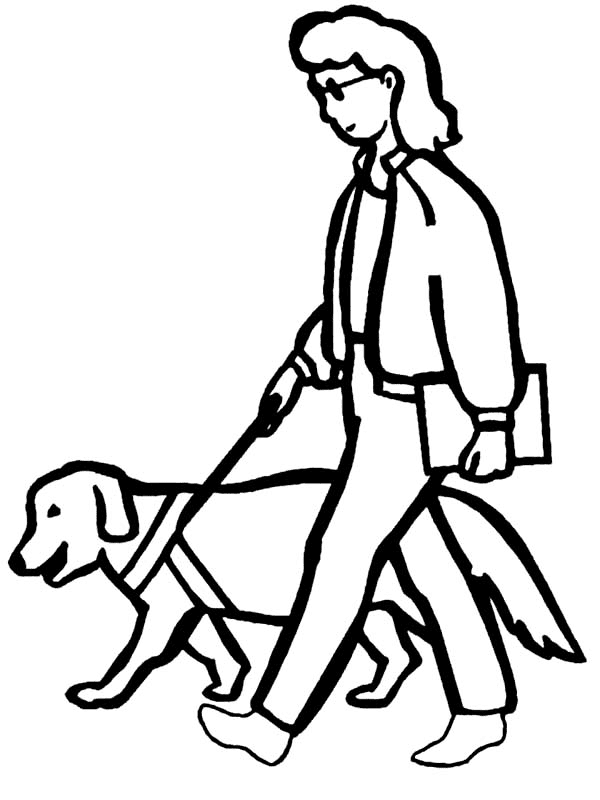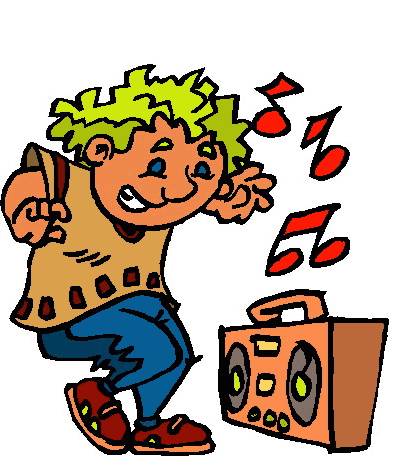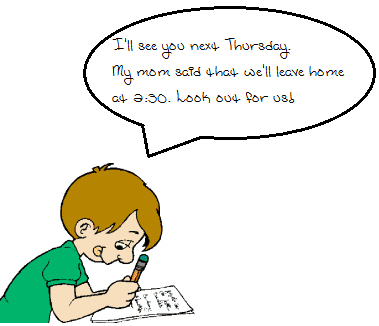Contents
Punctuation Marks
Punctuation marks help readers make sense of a text. They also help writers express themselves clearly.

Capital Letters
We always begin a sentence with a capital letter. We begin new line of a poem or rhyme with a capital letter. We begin a capital letter at the beginning of an exclamation and the first word in direct speech. Capital letters are used at the beginning of proper nouns (including: special places, special events and special names). They are used for titles, headings, headlines, days of the week, months of the year, and the personal “I”.


Little Bo-Peep
BY MOTHER GOOSE
Little Bo-Peep has lost her sheep,
And can’t tell where to find them;
Leave them alone, and they’ll come home,
Bringing their tails behind them.
Little Bo-Peep fell fast asleep,
And dreamt she heard them bleating.
But when she awoke, she found it a joke.
For they were still all fleeting.
Then she took her little crook.,
Determined for to find them;
She found them indeed, but it made her heart bleed,
For they’d left their tails behind them.
It happened one day, as Bo-Peep did stray
Into a meadow hard by,
There she espied their tails, side by side,
All hung on a tree to dry.
She heaved a sigh and wiped her eye,
And ran o’er hill and dale;
And tried what she could, as a shepherdess should,
To tack each sheep to its tail.
Source: Childcraft (1980)
Passage: READ THE PASSAGE BELOW AND OBSERVE THE CAPITAL LETTERS.
Sharon ran out of the house. It was New Year’s Day and she wanted to see the fireworks. I met Sharon by the bridge three miles from Saint Michaels R.C. Church along the Royal Main Road. She held on to a book under her arms. “The Ugly Coat” was the name of the book and it was written by Eva Lee Hernandez. “Can I borrow that book when you are done with it?” I asked Sharon. “I know Ms. Hernandez, the author.”
“Sure!” was all she said.
PERIOD
A period (.) is used at the end of a sentence that takes a statement (a declarative sentence) or gives a command. It is also use at end of many abbreviations.
Examples: two lbs.; A.D. 1883; 3 p.m.; etc.; M.D., J. S. Mill; MS., LL.D. (not M.S. and L.L.D.). Note that the use of the full stop in these cases does not prevent another point from being used immediately after it. But if they occur at the end of a sentence, another full stop is not added.
Example: Sam and I are going to the park at 2 P.M. sharp.
Example:
God is love. Life is short.
Dr. Moor arrived on Jan. 10, 2019.
A.N.R. Robinson was the third president of Trinidad and Tobago.
QUESTION MARK
A question mark (?) is used at the end of a sentence. A question mark is used to ask a question (interrogative). Example: Where are you going?
Exclamation Mark
An exclamation mark (!) is used at the end of a sentence. An exclamation mark is used to show strong feelings (anger, joy, surprise or excitement, fear) and a forceful command (utterance of a wish, a command, or a prayer).
Example: Sam, what a lovely day!
Example: Sam, look out!
Example: O Absalom! My son! My son!
Example: Quick! Begone! Out of my sight!
Example: Heaven preserve us!
Example: Would that better feelings moved them!
Example: O Lord, be merciful unto me, a sinner!
Exclamation mark can also be used to ask for help. Example: Please help me!
We often use exclamation marks after one word or after a short word. Example: Oh! I’m so disappointed. Wonderful! Just what we needed.
Note:
- That we should not insert a mark of exclamation immediately after an interjection, unless we make it can be made in speech.
- That no mark of exclamation is to be used at all, unless the exclamatory nature of the sentence is more or less strongly marked.
Observe the difference between “O” and “Oh.”
Alas! All our hopes are blasted.
Lo, he cometh!
O Dido, Dido, most unhappy Dido!
Unhappy wife, still more unhappy widow!
Oh, do not reckon that old debt to my account today!
QUOTATION MARKS
Quotation marks or inverted commas (” “) are used to enclose the exact words of a speaker. They are also used for titles of certain published works.
Capitalize the first word of a direct quotation that is a complete sentence. Remember, start a new line for each new speaker
Examples:
Julie says, “When we get to the park I will recite the poem for you.“
“When we get to the park,“ Julie says,“I will recite the poem for you.“
Julie says,“When we get to the park I will recite the poem,’Dogs and Weather’ for you.“
Winifred Welles penned poem “Dogs and Weather“.
COMMAS
Commas tell us to take a short pause when we are reading. It separate or set off elements in a sentence. Basically commas are used to separate three or more words.
Rules for comma usage:
- Use commas to separate three or more words, phrases, or clauses in a series. A comma can be placed in front of “and” if it makes the meaning clearer.
- Use a comma to separate any extra bits that are added to sentences.
- Use a comma to help us understand the meaning of a sentence better.
- Use a comma when you are including additional information in the middle of a sentence.
- Commas are used to set off non-essential details to a sentence.
- Commas set off two or more introductory phrases or a single long one with a comma
Examples:
- Mark, Laura, Mary and Sue are with their babysitter. Laura took the children to the zoo, the park, and for pizza.
- Thank you for the picture, Mrs. Laura.
- They are happy, polite, lively children.
- My cousin Laura, who lives in San Fernando, is a Tour Guide.
- Laura, who does not like rude children, is a Tour Guide.
- Indeed, Laura is a patient babysitter.
Commas in Letter Writing

WORDS IN APPOSITION
WORDS IN APPOSITION ARE GENERALLY MARKED OFF BY COMMAS.
Example:
James Watt, the great improver of the steam-engine, died on the 25th of August, 1819.
But where the words in apposition are used in a limiting or distinguishing sense, the principle of this rule applies. Thus we should write:
- Burns, the poet…
- Dickens, the novelist”; but, if we wished to distinguish them from another Burns and another Dickens, we should omit the comma.
It is of Pliny the naturalist, not of Pliny the letter-writer, that we are now speaking.
Again, where the general name precedes, we should in most cases use no comma, for the special name will be restrictive: “the poet Burns,” “the novelist Dickens.”
There is, perhaps, not much authority for the consistent carrying out of this distinction; but it seems useful and logical. Some cases, such as “Paul the Apostle,” “William the Conqueror,” “Thomas the Rhymer,” “Peter the Hermit,” present no difficulty. The name and the descriptive title are blended together, and form as distinctly one name as does “Roderick Random.”
SEMICOLON
The semicolon is used to separate two main clauses that are not joined by a comma and a coordinating conjunction (e.g. and, not, but).
Example:” I love Caribbean music, and soca is my favourite kind.” —-> “I love Caribbean music; soca is my favourite kind.”
Example: Atilla the Hun, also known as Raymond Quevedo, was a calypsonian; he was one of the pioneers in spreading the music from its birthplace in Trinidad and Tobago.
Semicolon is also used to separate the items in a series when one or more of the items already contain commas.
Example: Three popular calypsonians are Atilla the Hun, also known as Raymond Quevedo; Roaring Lion, Rafael de Leon; and Lord Kitchener, Aldwin Roberts, described as the Grand Master of Calypso.
COLON
A colon is used to introduce a list. The colon follows such words as these, namely, the following, or as follows.
Example: I am listening to some of my favourite calypsonians, namely: Roaring Lion, Lord Kitchener, and Atilla the Hun.
Don’t use a colon to introduce a list if the list immediately follows a verb or a preposition.
Example: Some of my favourite calypsonians are Roaring Lion, Lord Kitchener and Atilla the Hun.
Example (Comma): Mr. Brown went to the grocery to buy these: celery, cereals, yogurt, flour, chocolate and a box of cookies.
Example (Colon): Mr. Brown had bought all he needed for the cookies:By dawn he had baked 24 cookies for children.
Use a colon when you want to illustrate, explain or restate something. If a sentence follows the colon, capitalize the letter in the first word.
Use a colon to introduce a long or a formal quotation. A formal quotation is often preceded by such words as this, these, the following or as follows.
Example: I will close my speech today with these words from the bible: I know not what course others may take; ‘but as for me and my house, we will serve the Lord!'”
Example: I will close my speech today with these words from Hamlet’s Shakespeare: To be, or not to be: that is the question: Whether ‘tis nobler in the mind to suffer The slings and arrows of outrageous fortune, Or to take arms against a sea of troubles, And by opposing end them?…
Other uses of colon:
Greetings:
The meeting will take place at 2:25 on Monday. We will be discussing the beatitudes from Mathew 4:23 to Mathew 7. Be there!
HYPHENS AND DASHES
Hyphens (-) and dashes (–) do different jobs.
Hyphens
- A hyphen keeps words together to help make their meaning clear.
- A hyphen may on exception join a prefix to a word for the following reasons: joining prefix and a proper noun or proper adjective;and to avoid confusion between words.
- A hyphen is used in a compound adjective that precedes a noun.
- A hyphen is used for number and fractions that are written in words.
- A hyphen is used to indicate a span of numbers.
- A hyphen is used when words are divided at the end of a line. The words are divided between syllables or pronounceable parts. Consult a dictionary if you are unsure.
Example: I love freshly-baked bread. But —> The bread is freshly baked.
Example: Each loaf cost twenty-two dollars. We sell one-half loaves as well.
Example: He was an ill-tempered man. But —> He was a rather ill tempered man.
Do not hyphenate compound adjectives when they are modified by an adverb. Do not hyphenate an expression made up of an adverb that ends in –ly and an adjective.
Examples: You must read pages 25-45. But —-> You must read from pages 25 to 45. The library is opened between 2:45 and 3:15 P.M.
Example: a badly torn dress
Dashes
The dash has two hypens (–). Do not place a comma, a semicolon, a colon, or a period before or after a dash. Dashes can be used to emphasize extra information. Dashes indicate an abrupt change of thought in a sentence.
Example: The children — they are all students from the St. Joseph Private School — are going to the Museum on Monday. All the children — I mean most of them — look forward to going to the Museum.
Example: The children learnt that the truth has power — such is God’s will — to make us better.
PARENTHESES
Parentheses set off supplemental information. Commas and dashes also can be used in a similar regard; but the material is closely related to the rest of the sentence. Parenthesis are used for information provided in addition to what is already present or available to complete or enhance it.
Example: Glasses (eyeglasses or spectacles) are devices consisting of glass or hard plastic lenses mounted in a frame that holds them in front of a person’s eyes.
BRACKETS AND ELLIPSIS POINTS
Use brackets [ ] brackets to enclose information that you have inserted into a quotation for clarity.
An ellipsis is a series of three spaced periods ( … ) to indicate the omission of material from a quotation. There is no space between the first period in an ellipsis and the last word in the quote.
Quotation with omission:
“In Coronatiom Lane they had to stop the car. The whole street was filled with the mob….” — John Hearne (Voices Under the Window)
APOSTROPHE
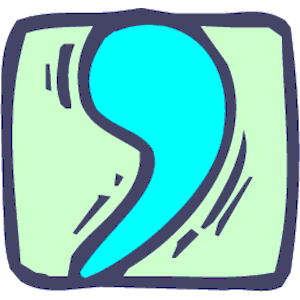
An apostrophe is a small mark used to show possession or to represent missing letters in contractions.
Example: Sam got his first headphones in the summer of ’95.
Sometimes we join two words together and miss out some letters. These words are called contractions.We use an apostrophe to show where letters have been missed out.
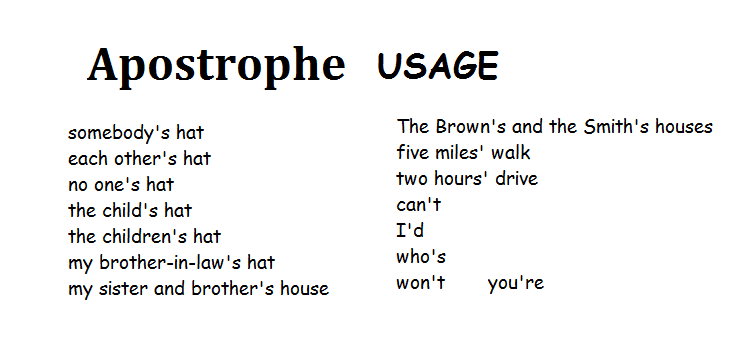
YOU WILL ALSO NEED TO LEARN THE FOLLOWING:
- she is- she’s
- he is – he’s
- it is – it’s
- where is – where’s
- what is – what’s
- how is – how’s
- there is – there’s
- they are – they’re
- he has – he’s
- is not – isn’t
- cannot – can’t
- will not – won’t
- would not – wouldn’t
- might not – mightn’t
- need not- needn’t
- has not – hasn’t
- are not- aren’t
- were not – weren’t
- was not – wasn’t
- have not- haven’t
- you are – you’re
- there are – there’re
- I will – I’ll
- you will – you’ll
- there will = there’ll
- I am – I’m
- I have – I’ve
- we have – we’ve
- I would – I’d
- they would – they’d
- we would – we’d
Worksheets
Click on the links below to download the PDF worksheets.

